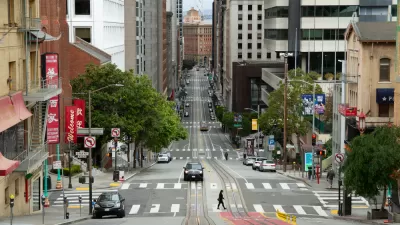Weekly releases of key data sets illustrate the impact of the coronavirus pandemic on U.S. citizens as a U.S. Census Bureau effort to enable data-driven decision-making in recovery planning.

On Wednesday, the U.S. Census Bureau released initial results from the new Household Pulse Survey, a measure of "a range of ways in which people’s lives have been impacted by the pandemic," expected for publication on a weekly basis through late July. The survey's data are intended to inform response and recovery planning at state and federal levels.
The survey tracks six key impact measures related to loss and expected loss of employment income, food scarcity, delayed medical care, housing insecurity, and K-12 educational changes, both nationally and by state. The first two weeks of data show that 21.3% of Americans had "only slight or no confidence in being able to pay next month’s rent or mortgage on time," reports Jane Callen.
Even during 2020 Decennial Census operations, the Census Bureau is dedicated to producing the near real-time data necessary to understand important changes in American life to effectively respond during this time of crisis, as described when the Census Bureau announced its new, coronavirus-related surveys in April.
FULL STORY: Weekly Census Bureau Survey Provides Timely Info on Households During COVID-19 Pandemic

Montreal Mall to Become 6,000 Housing Units
Place Versailles will be transformed into a mixed-use complex over the next 25 years.

Planetizen Federal Action Tracker
A weekly monitor of how Trump’s orders and actions are impacting planners and planning in America.

DARTSpace Platform Streamlines Dallas TOD Application Process
The Dallas transit agency hopes a shorter permitting timeline will boost transit-oriented development around rail stations.

Study: 4% of Truckers Lack a Valid Commercial License
Over 56% of inspected trucks had other violations.

Chicago Judge Orders Thousands of Accessible Ped Signals
Only 3% of the city's crossing signals are currently accessible to blind pedestrians.

Philadelphia Swaps Car Lanes for Bikeways in Unanimous Vote
The project will transform one of the handful of streets responsible for 80% of the city’s major crashes.
Urban Design for Planners 1: Software Tools
This six-course series explores essential urban design concepts using open source software and equips planners with the tools they need to participate fully in the urban design process.
Planning for Universal Design
Learn the tools for implementing Universal Design in planning regulations.
City of Mt Shasta
City of Camden Redevelopment Agency
City of Astoria
Transportation Research & Education Center (TREC) at Portland State University
US High Speed Rail Association
City of Camden Redevelopment Agency
Municipality of Princeton (NJ)





























